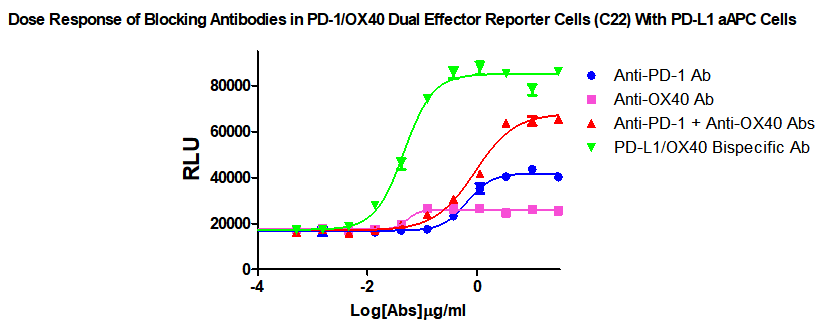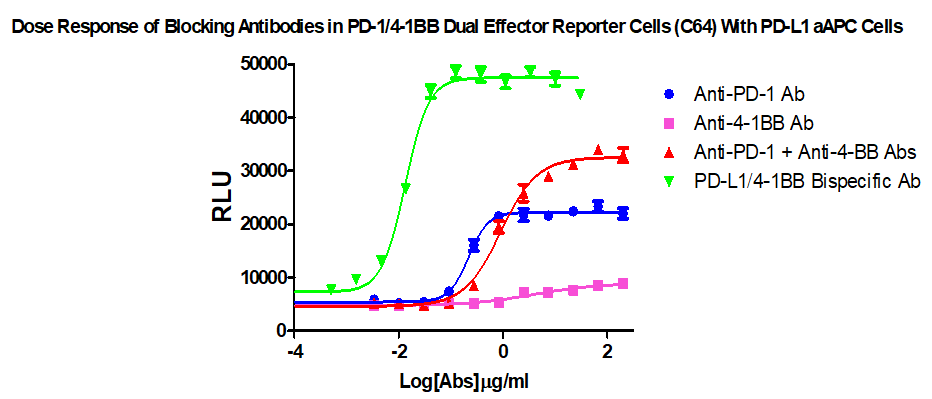PDL1 aAPC Cell
CBP74164
詢 價
索取Protocol
產(chǎn)品描述
產(chǎn)品數(shù)據(jù)庫
| I. Background | |
| The binding of Programmed Cell Death Protein 1 (PD-1), a receptor expressed on activated T-cells, to its ligands, PD-L1 and PD-L2, negatively regulates immune responses. The PD-1 ligands are found on most cancers, and PD-1:PD-L1/2 interaction inhibits T cell activity and allows cancer cells to escape immune surveillance. The PD-1:PD-L1/2 pathway is also involved in regulating autoimmune responses, making these proteins promising therapeutic targets for a number of cancers, as well as multiple sclerosis, arthritis, lupus, and type I diabetes. | |
| II. Introduction | |
| Expressed gene: | PDL1 |
| Stability: | 32 passages (in-house test, that not means the cell line will be instable beyond the passages we tested.) |
| Freeze Medium: | 90% FBS+10% DMSO |
| Culture Medium: | RPMI-1640+10%FBS+1ug/ml puromycin+200ug/ml hygromycin |
| Mycoplasma Testing: | Negative |
| Storage: | Liquid nitrogen |
| Application(s): | Functional(Report Gene) Assay |
| III. Representative Data | |

Figure 1. Dose Response of Blocking Antibodies in PD-1/OX40 Dual Effector Reporter Cells (C22) With PD-L1 aAPC Cells.

Figure 2.Dose Response of Blocking Antibodies in PD-1/41BB Dual Effector Reporter Cells (C64) With PD-L1 aAPC Cells.


